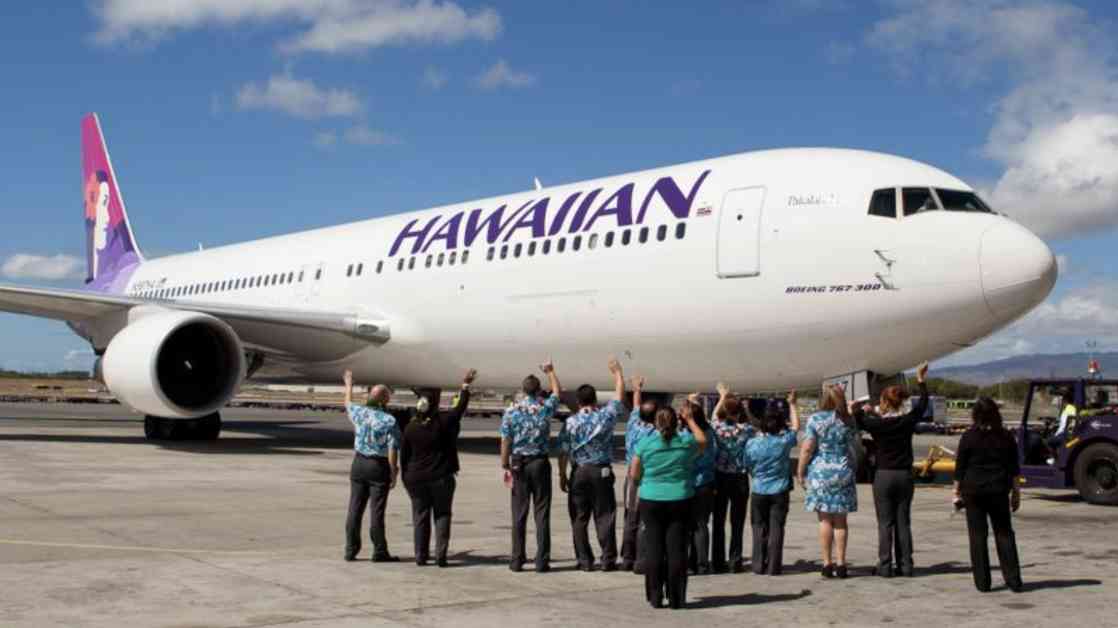Hawaiian Airlines is currently facing a pivotal moment in its history as it awaits the Department of Justice’s decision on its potential merger with Alaska Airlines. The outcome of this decision is expected to have a significant impact on the stock market, as well as on the travel industry in Hawaii. The uncertainty surrounding the merger has led to a rollercoaster ride for Hawaiian Airlines’ stock price in recent weeks, with sharp declines followed by dramatic surges.
The DOJ’s impending decision has left both Hawaii travelers and industry experts on edge, eagerly awaiting the outcome. The potential merger between Hawaiian and Alaska Airlines could potentially bring about a range of changes in the air travel landscape to and from Hawaii. Proponents of the merger argue that it could lead to enhanced route networks, more competitive pricing, and improved service offerings for travelers between the U.S. mainland and the islands.
However, there are also concerns about the potential monopolistic behavior that could arise from the merger, with critics warning about reduced competition on certain routes and the negative impact this could have on consumers. With Southwest Airlines also facing its own challenges, the DOJ’s decision could either help stabilize or further disrupt the airline market dynamics in Hawaii.
For travelers, the outcome of the merger will have direct implications on their future travel plans to Hawaii. A successful merger could result in new route options and potentially lower prices in some markets as the combined airlines optimize their operations. On the other hand, a rejection could lead to uncertainty, affecting flight availability and pricing as airlines adjust to the DOJ’s decision.
Investors are closely monitoring the situation, with many betting on a positive outcome from the DOJ’s decision. The recent surge in Hawaiian Airlines’ stock price reflects this optimism, but the risks remain high, and any unfavorable news could lead to further volatility in the stock market. The exchange of debt by Hawaiian Airlines also raises questions about its ability to continue as a standalone airline without the Alaska Airlines deal.
It remains to be seen whether the DOJ will require changes to the merger deal, such as adjustments to overlapping routes operated by both airlines. Previous mergers approved by the DOJ have seen similar conditions imposed, and it is possible that changes to routes to Hawaii from the Pacific Northwest and California could be on the table.
The utilization of the combined fleet of Alaska and Hawaiian Airlines is another point of interest. With Alaska operating a large fleet of Boeing 737 planes and Hawaiian Airlines having a mix of narrow-body and widebody aircraft, there is speculation about how the airlines will integrate and utilize their fleets moving forward. Significant changes in fleet utilization are expected over time, albeit possibly gradual at the beginning.
As the anticipated DOJ announcement draws near, tension is mounting in Hawaii as stakeholders in the travel industry brace for the decision. Hawaiian Airlines, a cornerstone of Hawaii’s air travel industry for nearly a century, is facing a critical moment that will not only determine its immediate future but also shape the broader travel landscape in Hawaii for years to come.
With all eyes on the coming week, the outcome of the DOJ decision will have far-reaching implications for Hawaii travelers, investors, and the airline industry as a whole. The drum roll leading up to the decision has created a sense of anticipation and uncertainty, with the potential for both positive and negative outcomes. Stay tuned as we cover the developments and their impact on Hawaii’s travel industry.






















